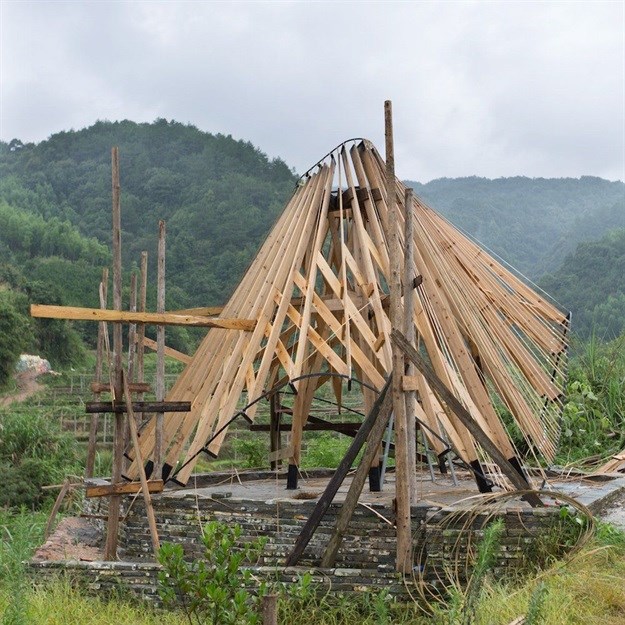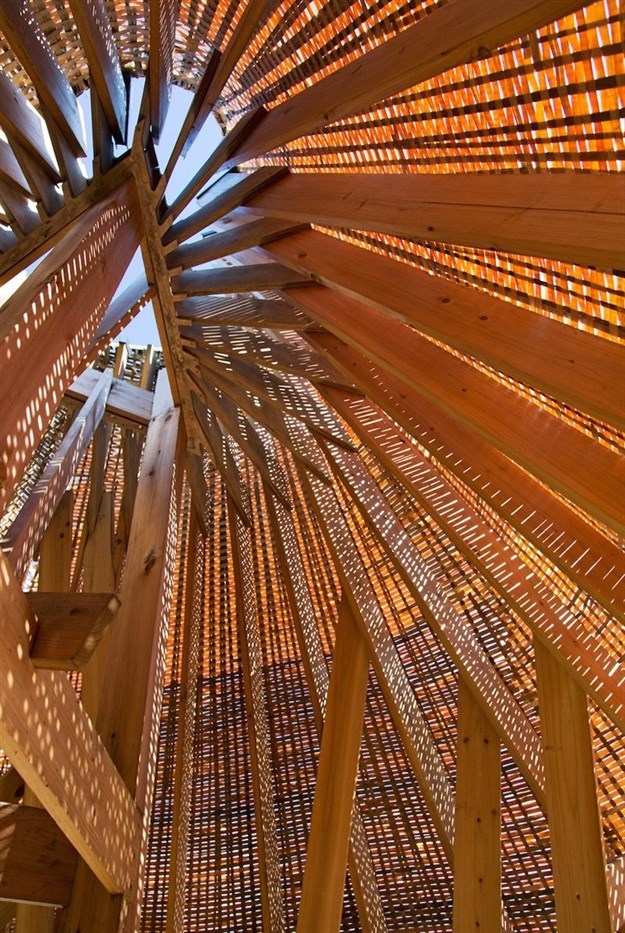A highly sustainable and culturally significant method of construction in China, bamboo weaving is a practice that is on a steep decline. Due to its complexity and reliance on skilled labour, expert bamboo weavers, who aren't very easy to come by, are required for its fabrication. In an effort to revive this valuable tradition, a group of students from the
University of Hong Kong contributed to the construction of a traditional bamboo structure in the Chinese village of Peitian called the Sun Room pavilion.
"Historically, these pavilions were often used by craftsmen to demonstrate their skill or to trial new construction methodologies,” HKU architecture course leader Donn Holohan told Dezeen. “Today these structures have, for the most part, been replaced by generic outbuildings in concrete and brick. The craft of bamboo weaving is in drastic decline with only one practicing artisan remaining in Peitian."
Located in a new passion fruit plantation, the Sun Room Pavilion project began as a project that sought to apply digital design methods to unravel the intricacy of this age old craft. In an effort to determine its potential as an alternative construction methodology for local people, the HKU students were brought on to adapt and grow this traditional technique.
More than just a construction job, the project addresses the crisis of cultural loss that the decline in working with traditional techniques could lead to, and the team of students worked closely with the last remaining bamboo weaver in the village throughout the project. The final structure consists of an outer shell made from the woven bamboo material, as well as a pine load-bearing structure that was sourced regionally and cut by local carpenters.
Because of the location remoteness and lack of direct street access, every element of it had to be designed to be easily transported and manually installed. With the aid of the village community, the UHK student team managed to construct a 215-square-foot structure that provides effective shelter and aids to preserve the region’s cultural history.







































